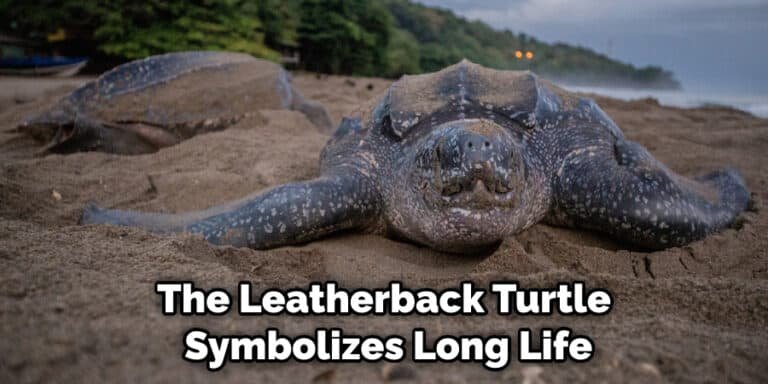
Let’s dive into some of the myths and cultural beliefs associated with the leatherback turtle. Think of it like peeling back the layers of a fascinating onion—each layer reveals something new and surprising. Throughout different cultures, the leatherback turtle has inspired tales of wisdom, strength, and even transformation. So, grab a cup of coffee, and let’s explore the truths and tall tales surrounding this incredible creature!
The Leatherback Turtle: An Overview
Before we dive into the myths, it’s worth taking a moment to understand what makes the leatherback turtle so special. These turtles are the largest of all sea turtles and can migrate thousands of miles across oceans. Unlike their hard-shelled relatives, leatherbacks have a unique, flexible shell that allows them to dive deep into icy waters, hunting for jellyfish.
You might be wondering why they’re so important. Leatherback turtles play a crucial role in their ecosystems by helping maintain jellyfish populations. This helps keep the ocean food web balanced, which ultimately affects the health of marine life and, indirectly, human life too.
Myth 1: The Leatherback as a Symbol of Longevity
In various cultures, the leatherback turtle is often seen as a symbol of longevity and wisdom. Many believe that these turtles carry the knowledge of the ages because of their long lifespan, which can reach up to 50 years or more. In some indigenous cultures, the leatherback turtle is revered as a guardian spirit, protecting the oceans and imparting wisdom to those who respect the sea.
For instance, in some Pacific Island cultures, there are stories of turtles rescuing fishermen who have lost their way. The turtles are believed to guide them back to shore, acting as guardians of the ocean. This belief highlights a deep respect for nature and the interconnectedness between humans and marine life.
Myth 2: The Leatherback as a Fearsome Creature
Another common myth is that leatherback turtles are fearsome predators. While they do eat jellyfish—which can be quite formidable in their own right—these turtles are actually gentle giants. They have no teeth and instead rely on their leathery throat muscles to swallow their food whole.
This misunderstanding often comes from their impressive size. Some cultures depict them as fierce beings within sea legends, perhaps to emphasize their power or importance in oceanic folklore. However, in reality, these turtles are more about survival and balance than fear and violence.
Cultural Beliefs: The Leatherback as a Spirit Animal
In many cultures, the leatherback turtle is seen as a spirit animal that embodies qualities such as strength, perseverance, and resilience. For instance, among some Native American tribes, the turtle is celebrated as a symbol of Mother Earth. The leatherback, with its deep connection to the ocean, represents the vastness of our planet and the importance of protecting it.
Additionally, many believe that encountering a leatherback turtle can bring good luck or signify a new beginning. This connection often stems from the turtle’s extraordinary migrations; its journey is seen as a metaphor for life’s challenges and the strength needed to overcome them.
Conservation Myths and Misunderstandings
As much as myths and cultural beliefs can inspire awe, they can also lead to misconceptions, especially regarding conservation. Some people mistakenly believe that because leatherback turtles are so large, they are not vulnerable to extinction. In reality, these majestic creatures are critically endangered, facing threats from climate change, habitat loss, and poaching.
Misunderstanding the leatherback’s role in the ecosystem can dilute efforts to conserve their populations. Awareness and education are crucial in combating these myths. By understanding the true challenges these turtles face, we can foster a culture that prioritizes their protection.
The Role of Myths in Conservation Efforts
Interestingly, myths and cultural stories can aid conservation efforts. By weaving the narratives of leatherback turtles into conservation messages, communities can foster a sense of respect and responsibility toward these creatures. For example, storytelling that emphasizes the leatherback’s symbolism as a protector of the sea can motivate young people and local communities to engage in conservation practices.
One program might focus on community storytelling workshops where myths about the leatherback are shared, along with educational content about their ecological significance. This merging of culture and science can inspire action in powerful ways.
Final Thoughts: Celebrating the Leatherback Turtle
Leatherback turtles are more than just remarkable animals; they are intertwined with human culture and beliefs. From myths of longevity and wisdom to cultural representations as spirit animals, these stories enrich our understanding of the leatherback turtle’s significance. However, as we celebrate these majestic creatures, it’s important to ground our understanding in the realities of their existence.
By embracing both the myths and the truths, we can foster a deeper connection to our oceans and take meaningful action in conserving this incredible species. So, the next time you think about the leatherback turtle, remember it’s not just a creature of the sea—it’s a symbol of resilience, balance, and the stories we share about our world.
